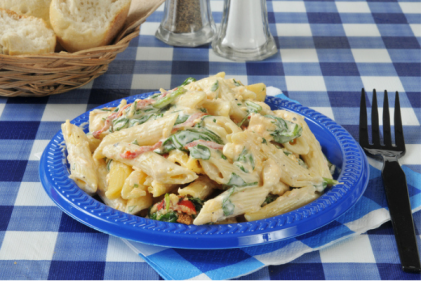Having a fussy eater can be a nightmare for parents and it’s a common problem that most parents must face at some point. While it’s often just a phase, it can cause a lot of stress and worry for mums and dads and can make meal times a misery.
Safefood has given some advice to help parents deal with a fussy eater. Dr. Marian Faughnan, nutritionist with Safefood has given some tips and hints to encourage your child to eat and to also ensure they are getting everything they need from their food.
At times, children might not take anything at all but don’t panic - this is actually quite a normal process in a child’s development. If your child seems healthy and is reaching their weight and height goals then there’s probably nothing to worry about. Some toddlers refuse food because they are looking for attention, trying to show their independence or they may be just trying to feed themselves.
Some key tips for dealing with fussy eating are:
At times, children might not take anything at all but don’t panic - this is actually quite a normal process in a child’s development. If your child seems healthy and is reaching their weight and height goals then there’s probably nothing to worry about. Some toddlers refuse food because they are looking for attention, trying to show their independence or they may be just trying to feed themselves.
Some key tips for dealing with fussy eating are:
- Praise your child when they do eat well
- Stay calm (in front of your child at least) and try to be positive
- Don’t force feed – children may develop a negative association with a food
- Avoid bribery – children learn fast and will soon realise they have the upper hand and expect something in return for eating regularly
- Don’t offer alternatives at the table
- Sit down at the table with your child and make mealtime a positive experience e.g. talk about the day that has gone by or the day ahead
- Make sure your child is not filling up on sugary snacks or drinks between mealtimes, otherwise they won’t be hungry.
- Turn off the television or any other distractions during mealtimes
If your child is refusing point blank to eat something regularly, it could be that they just don’t like a particular food. Like adults, they have their own likes and dislikes. To make sure they are not missing out on important food groups, here are some alternatives you can give your child:
If your child refuses meat:
- Offer boiled, poached or scrambled eggs instead
- Offer baked beans
- Try casseroles using pulses like lentils and chickpeas instead of meat
- Use minced meat and serve it with a sauce or gravy
If your child refuses vegetables:
- Offer them vegetable sticks to munch on as snacks
- Many children prefer fruit, so give an extra piece of fruit instead
- Offer a cup of diluted unsweetened fruit juice
- Blend up vegetables, and try to disguise them in meals and soups
- Mash boiled cauliflower into potatoes
- Call it something interesting. Young children can be persuaded to try almost anything if it has a fun name – princess pie, fisherman’s lunch, etc
If your child refuses milk:
- Give them yoghurt or fromage frais as a snack
- Use milk to make sauces (like cheese sauce)
- Add grated cheese to their potatoes or pasta dishes
- Give cheese cubes as a snack
- Try milk-based desserts like custard or rice pudding
Sometimes, your child will reject a food the first few times you offer it, but will come around to it eventually with plenty of encouragement. And because your child may need to try a food 8 to 10 times before they like it, try your best not to give up easily!



